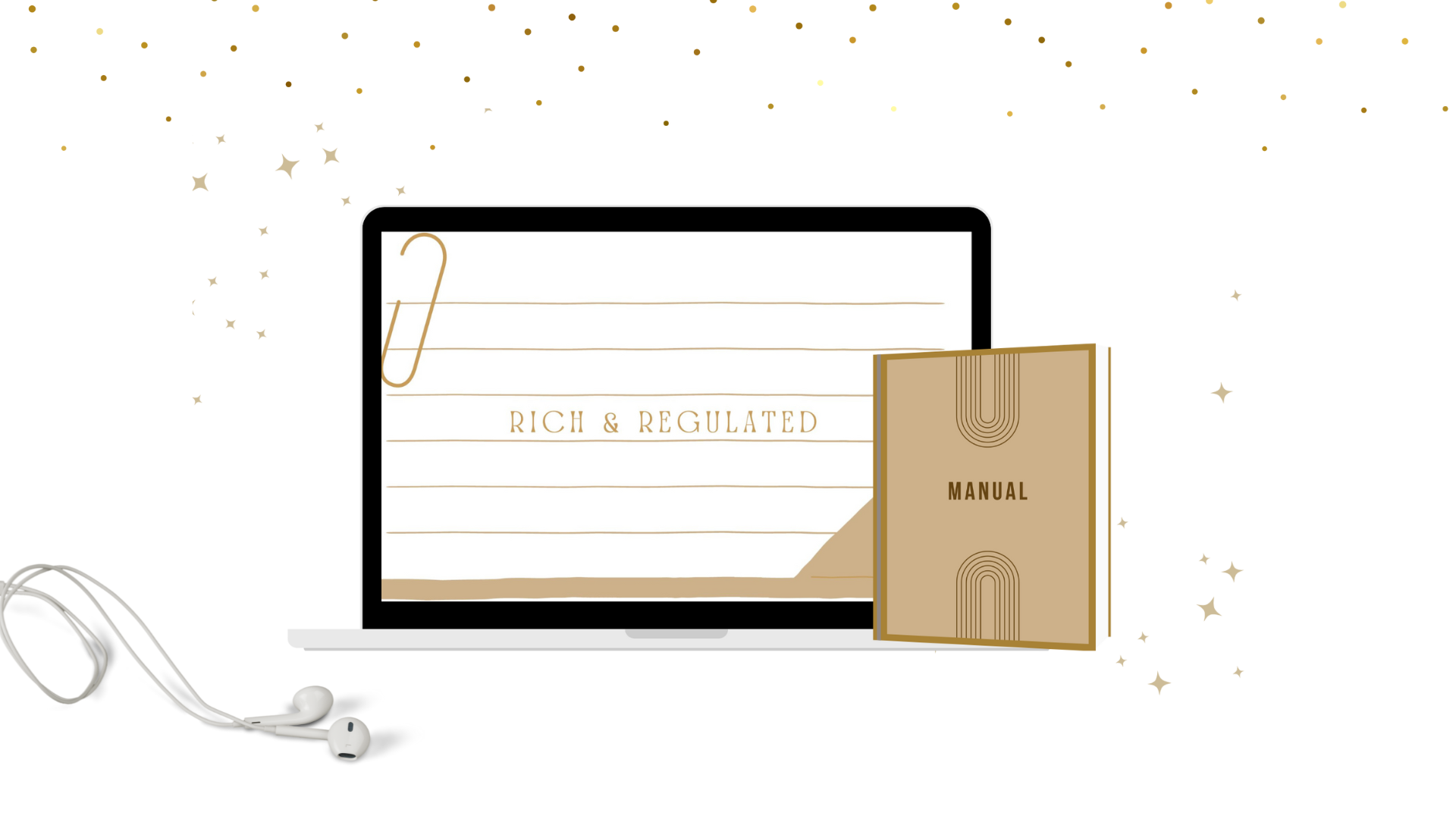Queer Guide to Financial Trauma Healing

Navigating Financial Trauma Healing with Queer Resilience
In this guide, we explore the intersection of queerness and financial trauma, providing a roadmap for healing and empowerment. As a queer individual, you often face unique challenges and forms of discrimination that can manifest as financial trauma.
However, by harnessing your queer resilience and embracing transformative practices, you can heal your relationship with money, build financial stability, and cultivate a sense of abundance.
This guide offers insights, tools, and strategies to support you in your journey toward financial healing.
Pillar 1: Acknowledge the Impact of Financial Trauma
Begin by acknowledging the impact that financial trauma has had on your life. Recognize that financial struggles, discrimination, and marginalization can deeply affect our sense of self-worth, security, and overall well-being. By acknowledging the trauma, you lay the foundation for healing and growth.
1st. Create a Safe Space
Find a quiet and comfortable space where you can reflect and delve into your feelings and experiences without distractions. This could be a private room in your home, a peaceful outdoor setting, or any place where you feel safe and at ease.
- Self-Reflection
Take a few moments to center yourself through deep breathing. Allow your thoughts and emotions to surface as you reflect on your relationship with money and any past financial experiences that may have caused trauma. Be gentle with yourself during this process, as it may evoke difficult emotions.
- Define Financial Trauma
Educate yourself about financial trauma and its potential impact. Understand that financial trauma can stem from experiences such as economic hardship, poverty, discrimination, loss of income, or financial abuse. Recognize that financial trauma affects not only your financial well-being but also your emotional and psychological state.
- Identify Patterns and Behaviors
Reflect on your financial patterns and behaviors that may indicate the presence of financial trauma. Consider if you have experienced ongoing financial anxiety, fear, or a sense of scarcity. Notice any avoidance of financial matters or a tendency to overspend or underspend as coping mechanisms. These patterns can be signs of unresolved financial trauma.
- Emotional Responses
Pay attention to your emotional responses when engaging with financial topics or situations. Notice if you feel a heightened emotional response, such as fear, shame, anger, or a sense of powerlessness. These intense emotions can be indicators of underlying financial trauma that requires acknowledgment and healing.
- Physical Manifestations
Be aware of any physical manifestations or somatic symptoms that arise when financial topics or stressors come up. Notice if you experience tension in your body, headaches, digestive issues, or sleep disturbances. These physical signs can be connected to unaddressed financial trauma.
- Seeking Validation
Seek validation and support from trusted friends, family members, or mental health professionals who can provide a safe space for you to share your experiences and feelings surrounding financial trauma. Discussing your challenges and hearing others' affirmations can help validate the impact of financial trauma on your life.
- Journaling
Engage in journaling as a tool for self-reflection and acknowledgment. Write freely about your financial experiences, beliefs, and emotions. Allow yourself to express any pain, frustration, or confusion related to financial trauma. Journaling can bring clarity and validation to your journey of acknowledgment.
- Professional Guidance
Consider seeking support from a therapist, counselor, or financial professional who specializes in trauma or queer-affirming care. Here at FWRD our clients have experienced powerful shifts thanks to financial hypnotherapy. We can provide guidance, tools, and strategies to help you navigate the impact of financial trauma and work toward healing and resilience.
- Patience and Self-Compassion
Be patient and compassionate with yourself as you acknowledge the impact of financial trauma. Remember that healing takes time, and everyone's journey is unique. Practice self-care, engage in activities that bring you joy, and seek support from a community that understands and supports you as you navigate the process of healing from financial trauma.
Remember, acknowledging the impact of financial trauma is an essential step towards healing and reclaiming your financial well-being. By recognizing the signs, seeking support, and engaging in self-reflection, you can begin the journey towards healing and building a healthier relationship with money.
Pillar 2: Cultivate Self-Compassion and Resilience
Practice self-compassion by acknowledging the challenges you've faced and reframing your experiences through a lens of resilience. Recognize that your ability to survive and thrive in the face of adversity is a testament to your strength and resilience as a queer individual.
Pillar 3: Seek Support and Professional Help
Don't be afraid to seek support from professionals such as financial advisors, therapists, or counselors who specialize in trauma and queer-affirming care. Here at FWRD our clients have experienced power shifts thanks to a combination of financial self-hypnosis and somatic self-hypnosis.
We provide guidance, tools, and resources tailored to your specific needs, helping you navigate the healing process with expertise and sensitivity.
Pillar 4: Uncover and Challenge Limiting Money Beliefs
Reflect on any limiting beliefs or negative narratives you hold around money and your worthiness of financial abundance. These beliefs may have been internalized due to societal messages or experiences of discrimination. Challenge these beliefs by affirming your inherent worthiness and reframing money as a tool for self-empowerment and liberation.
1st. Self-Reflection
Set aside dedicated time for self-reflection on your money beliefs. Find a quiet and comfortable space where you can focus without distractions. Take a few deep breaths to center yourself and bring awareness to your thoughts and emotions.
2nd. Identify Negative Thought Patterns
Observe your thoughts and emotions around money. Notice any recurring negative patterns, self-doubt, or limiting beliefs that arise. Pay attention to phrases or beliefs such as "I'm not good with money," "Money is the root of all evil," or "I'll never be wealthy." Write down these beliefs to gain clarity.
Examine the Origins:
Explore the origins of your limiting money beliefs. Reflect on your upbringing, childhood experiences, cultural influences, and the messages you received about money from family, society, or media. Consider how these influences may have shaped your current beliefs.
3rd. Challenge the Validity
Question the validity of your limiting money beliefs. Ask yourself if there is evidence that supports or refutes these beliefs. Consider alternative perspectives or success stories that contradict your limiting beliefs. Engage in critical thinking to challenge the accuracy of these beliefs.
4th. Journaling
Use journaling as a tool for introspection and exploration. Write freely about your money beliefs, digging deep into your emotions and thoughts surrounding money. Ask yourself questions such as "How have these beliefs impacted my financial decisions?" or "What would be possible if I released these limiting beliefs?"
Pillar 5: Develop a Holistic Relationship with Money
Shift your perspective on money by approaching it holistically. Explore your values, priorities, and aspirations to align your financial goals with your queer identity and personal growth. Engage in conscious spending, saving, and investing practices that reflect your values and support your long-term well-being.
Pillar 6: Build Financial Literacy and Empowerment
Educate yourself about personal finance and build your financial literacy. Explore resources that provide queer-inclusive financial advice, budgeting techniques, and investment strategies. Empower yourself with the knowledge to make informed decisions and take control of your financial future.
Pillar 7: Create a Supportive Financial Community
Connect with queer and LGBTQ+ communities that focus on financial empowerment and support. Seek out local organizations, online groups, or workshops that provide safe spaces to discuss financial topics, share resources, and learn from each other's experiences. By building a supportive community, you can exchange knowledge and create a sense of solidarity.
Pillar 8: Engage in Money Mindfulness and Healing Practices
Incorporate mindfulness practices into your financial healing journey. Practice gratitude for the resources you have and cultivate a positive mindset towards money. Engage in visualization exercises, affirmations, or journaling to release financial trauma and manifest abundance. Find rituals that resonate with you and integrate them into your regular self-care routine.
Begin with Financial Self Hypnosis:
1st. Find a Quiet and Comfortable Space
Select a quiet and comfortable space where you can relax without interruptions. Choose a time when you can focus solely on the self-hypnosis session.
-Set an Intention
Clarify your intention for the self-hypnosis session. It could be to cultivate a positive financial mindset, overcome financial blocks, or develop healthy money habits. Be clear about your desired outcome.
-Relaxation and Deep Breathing
Close your eyes and take a few slow, deep breaths to help relax your body and mind. With each exhale, release any tension or stress you may be carrying.
-Induce Trance
Begin to induce a hypnotic state by repeating a relaxation script or affirmations related to your financial intention. Speak slowly and rhythmically, allowing your mind to become more receptive and relaxed.
-Visualization and Imagery
Engage your imagination to create a vivid mental image related to your financial intention. Visualize yourself in a scene where you have achieved financial success, abundance, or any other desired outcome. See the details, feel the emotions, and engage all your senses.
You can use the self-hypnosis audio in our Financial Alchemist Self-hypnosis Set.
-Positive Autosuggestions
While in the hypnotic state, repeat affirmations and positive suggestions related to your financial goals. Use empowering statements such as "I am worthy of financial abundance," "I make wise financial decisions," or "I attract opportunities for wealth and prosperity." Repeat these affirmations with conviction and belief.
Gratitude and Positive Associations
Express gratitude for the financial resources you currently have and for the opportunities that lie ahead. Associate positive emotions, such as joy and gratitude, with your financial goals and aspirations. Embrace a sense of abundance and appreciation.
-Gradual Awakening
When you feel ready to conclude the self-hypnosis session, gently bring your awareness back to the present moment. Count from one to five, telling yourself that you will awaken fully, feeling refreshed and energized.
-Reflect and Take Action
After the self-hypnosis session, spend a few moments reflecting on any insights or messages you received. Consider actionable steps you can take to align your behaviors and decisions with your financial goals. Commit to implementing these steps in your daily life.
Remember, self-hypnosis requires practice and consistency to be effective. If you have any concerns or feel uncomfortable during the process, discontinue the session and consider seeking guidance from a qualified hypnotherapist or therapist who specializes in financial matters.
You can find one in our directory here: https://www.fwrdinstitute.com/fwrd-certified-member-directory
Take this Financial Assessment to discover what type of money block you have
Pillar 9: Advocate for Queer-Inclusive Financial Systems
Use your voice and leverage your experiences to advocate for systemic change. Support and engage with organizations that work towards queer-inclusive financial policies, fair employment practices, and affordable access to healthcare and housing. By advocating for change, you contribute to creating a more equitable financial landscape for queer individuals.
Pillar 10: Celebrate Your Financial Victories
Acknowledge and celebrate your financial victories, no matter how small they may seem. Recognize the progress you've made in your healing journey and the steps you've taken toward financial empowerment. Celebrate the resilience, strength, and growth you embody as a queer individual navigating financial trauma.
Healing from financial trauma as a queer individual is a transformative journey that requires self-compassion, resilience, and a commitment to your well-being.
By embracing your queer identity and utilizing the tools and strategies outlined in this guide, you can heal your relationship with money, build financial stability, and cultivate a sense of abundance aligned with your values and aspirations.
Remember, you are deserving of financial healing and empowerment, and your journey toward financial well-being is a testament to your queer resilience.
Continue Your Financial Healing Journey in the Rich & Regulated Workshop





